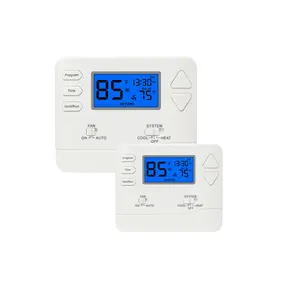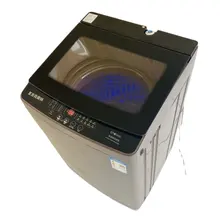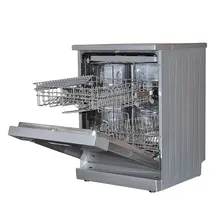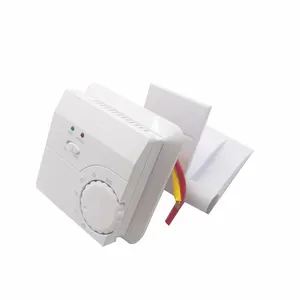Introduction
Navigating the world of thermostats can be a daunting task, given the wide array of options available in the market. From basic non-programmable models to advanced smart thermostats, each offers unique features and capabilities that impact their pricing. This comprehensive guide aims to demystify the cost of thermostats, providing insights into the types of thermostats, key features to consider, and how technology has influenced their pricing. We will also delve into the price ranges for basic, mid-level, and high-end thermostats, and how to get the best value for your money.
Understanding Thermostats
A thermostat is a control device used to regulate temperature in a heating system. You can set a preferred temperature, and the thermostat works to maintain this level. If the temperature drops, the thermostat switches the heating on to warm it up. Once the set temperature is reached, the thermostat switches off the heating. Thermostats come in various forms, from traditional temperature dials to smartphone apps. They can be digital or mechanical, each with their unique features and accuracy levels.
Types of Thermostats
Thermostats are essential for HVAC efficiency and indoor comfort. There are four basic types: Non-programmable, programmable, Wi-Fi, and smart thermostats. Non-programmable thermostats are simple and require manual adjustment. Programmable thermostats allow pre-setting of temperatures for different times of the day. Wi-Fi thermostats offer remote access and control over temperature settings. Smart thermostats integrate with home automation tools, learn your habits over time, and adjust the temperature accordingly. They also offer features like voice control and compatibility with various digital assistants.
Key Features to Consider
When considering a smart thermostat, key features to look for include learning capabilities, app and voice control, and convenience features. Learning features allow the thermostat to adjust heating and cooling based on your habits. App control provides mobile access to all functions, and voice control enables integration with digital assistants. Convenience features, such as filter change alerts and zoned heating, provide additional benefits. These features not only make a thermostat smarter but also help reduce heating and cooling costs.
The Impact of Technology on Thermostat Pricing
The advent of technology has significantly impacted thermostat pricing, particularly with the introduction of smart thermostats. These devices come with features like time-of-use (TOU) optimization, which intelligently pre-cools or pre-heats homes during off-peak electricity rates. This feature, acting as an energy storage resource, leverages customer comfort preferences, real-time and historical occupancy patterns, and a home's specific thermodynamic properties to create personalized, real-time optimization around a time-based rate. This technology not only leads to significant energy and bill savings but also ensures predictable load reductions.
Smart Thermostats
Smart thermostats have evolved significantly over the years, offering features like geofencing, multiple sensors, auto scheduling, smart fan activation, and voice activation. These thermostats can communicate with sensors throughout the house, balance air temperatures, and adjust settings based on your presence. They typically cost between $75 and $300, but their energy efficiency can result in savings that quickly offset the initial cost. However, upgrading to a smart thermostat may require more advanced wiring than older models. As utility companies adjust rates based on usage, smart thermostats will become even more essential, allowing for temperature adjustments during high-usage hours to save money.
Wi-Fi Thermostats
Wi-Fi thermostats revolutionized the market by offering connectivity and intelligent scheduling. They learn your daily routine and adjust heating and cooling schedules accordingly. These thermostats can be controlled remotely from a mobile device or a web browser, allowing you to adjust temperature, create a seven-day heating and cooling schedule, and override the schedule if needed. More advanced models support geofencing technology, adjusting the temperature based on your phone's location. They also provide usage reporting, showing historical data on system usage and efficiency.
Learning Thermostats
High-end thermostats learn your schedule and adjust the temperature accordingly, providing comfort and energy efficiency. For instance, they warm up the house as you get out of bed, and set themselves to an Eco Temperature when you're away. They can even prioritize certain rooms with additional temperature sensors. You can also adjust the temperature remotely, making them a convenient choice for busy households. Their smart features contribute to their higher price point, but the energy savings and convenience they offer can provide long-term value.
Comparing Thermostat Prices
Smart thermostats vary in price depending on their features and capabilities. Basic models with Wi-Fi connectivity and simple scheduling options are relatively inexpensive. However, thermostats that support complex multi-stage systems and offer advanced features like geofencing, usage reporting, and compatibility with other smart devices are more expensive. Keep in mind that while the initial cost of a smart thermostat can be high, they can help reduce heating and cooling costs over time, providing long-term savings and flexibility.
Price Range for Basic Thermostats
The cost of basic thermostats, such as manual and programmable ones, can be quite affordable. The average cost to install a thermostat is around $200, with lower average costs starting at $80. However, the cost can reach up to $425 for more complex systems. For manual and programmable thermostats, multiple units must be installed for zoning, which can affect the overall cost. Additionally, the cost of installation can vary depending on the mode of operation, with heat-only systems being less expensive to install than heating and cooling systems.
Price Range for Mid-Level Thermostats
Mid-level smart thermostats offer a balance between cost and features. They typically have Wi-Fi connectivity, allowing remote control via mobile devices, and basic scheduling options. Some models also include humidity sensors, local weather forecasts, and motion sensors to activate their displays. While they may not display time and temperature until tapped, they often support geofencing technology for automated temperature adjustments based on your location. Prices vary depending on features and capabilities, but these thermostats provide a good mix of affordability and functionality.
Price Range for High-End Thermostats
High-end smart thermostats offer advanced features that justify their higher price. For instance, some models have built-in smart speakers and remote sensors for refined climate control. Others use built-in AI to create an efficient heating and cooling schedule. These premium thermostats provide superior comfort and energy savings, making them a worthwhile investment despite their higher initial cost.
Getting the Best Value for Your Money
While smart thermostats may have a higher upfront cost compared to traditional thermostats, the long-term savings they provide outweigh the initial investment. The energy savings achieved over time not only offset the initial cost but also lead to significant savings on utility bills. According to energy experts, homeowners can save up to 10% annually on heating and cooling costs by simply turning their thermostats back by 7-10 degrees Fahrenheit for 8 hours per day.
Considerations for Energy Savings
Smart thermostats can significantly contribute to energy savings. They turn off the heat and AC more often than regular thermostats, without sacrificing comfort. They do this by detecting when the house is empty and switching to an energy-saving mode. Moreover, they make it easy to set up a sensible heating and cooling schedule. Energy experts estimate that setting your thermostat back 7° to 10°F for 8 hours a day can save about 10 percent on your heating and cooling bills.
Long-Term Value vs. Initial Cost
When considering the long-term value versus the initial cost of a thermostat, it's essential to evaluate its energy efficiency. For instance, smart thermostats, using machine learning algorithms, can save an average of 10-12% on heating bills and 15% on cooling bills. Thermostats with occupancy sensors can save homeowners an average of 23% on annual heating and cooling costs. Programmable thermostats can save homeowners up to 10% on heating and cooling costs. These savings significantly offset the initial cost over time, making these thermostats a cost-effective investment.
Where to Buy Thermostats for the Best Price
For the best prices on thermostats, consider online platforms like Alibaba. Here, you can find a wide range of thermostats, from basic to high-end models, all at competitive prices. The most affordable options are available for as low as $80, while high-end models with advanced features can be found for around $200.
Conclusion
In conclusion, the price of a thermostat is influenced by its type, features, and the technology it employs. While basic thermostats are affordable, smart thermostats, despite their higher initial cost, offer long-term savings on heating and cooling costs. They provide superior comfort, energy efficiency, and convenience, making them a worthwhile investment. When purchasing a thermostat, it's crucial to consider not just the initial cost, but also the potential energy savings and the convenience it offers. By doing so, you can ensure that you're getting the best value for your money.








































 浙公网安备 33010002000092号
浙公网安备 33010002000092号 浙B2-20120091-4
浙B2-20120091-4